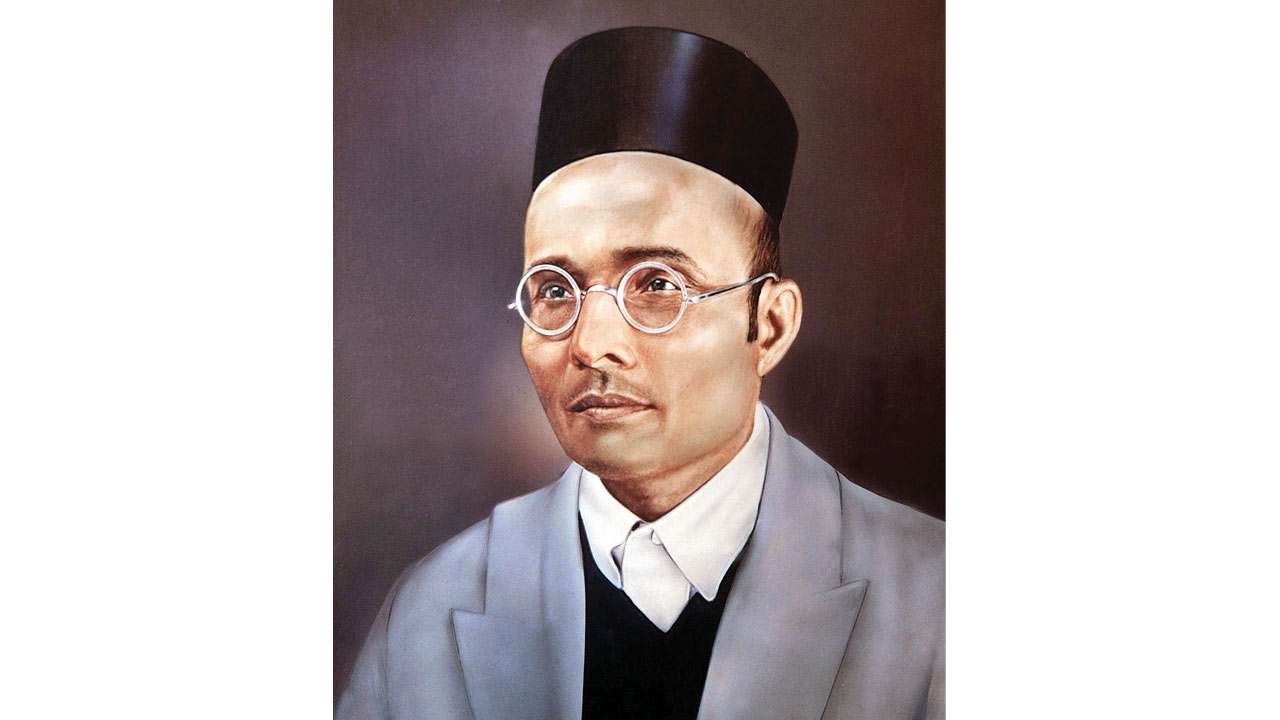
"His name was a byword for daring and patriotism. Mr Savarkar was cast in the mould of a classical revolutionary and countless people drew inspiration from him…Savarkar's defiance of the British government has its own place in the freedom struggle."
These were the words, not of any BJP or RSS leader, but of former Prime Minister Indira Gandhi spoken on Vinayak Damodar Savarkar's death on February 26, 1966. This grace from their erstwhile leader is something that the current bunch of Congressmen and the NSUI activists seem to have forgotten — especially in the wake of the shameful vandalism of Savarkar's bust at the Delhi University on Thursday.
Interestingly, Savarkar's bust was placed along with those of Bhagat Singh and Netaji Subhas Chandra Bose — both of whom drew inspiration from Savarkar. Bhagat Singh was instrumental in getting the fourth edition of Savarkar's magnum opus 'The First War of Indian Independence' published in India. Copies of the book and Savarkar's biography 'Life of Barrister Savarkar' were found during the raids conducted on members of the Hindustan Socialist Republican Association (HSRA). An ex-comrade, Durgadas Khanna, mentioned in an interview that Bhagat Singh and Sukhdev had interviewed him for entry into the HSRA and one criteria for admission was whether they had read books on and by Savarkar.
Legacy Forgotten |
|---|
| Vinayak Savarkar’s bust was alongside Bhagat Singh and Netaji Subhas Chandra Bose’s in Delhi varsity. Both men drew inspiration from him |
| Bhagat Singh had the 4th edition of Savarkar’s book ‘The First War of Indian Independence’ published in India |
Rash Behari Bose and Netaji both had copies of the book based on the 1857 war of Independence, which was printed in Japan. More copies were found in several raids conducted on members of the Indian National Army (INA). In the April 1939 edition of Japanese magazine Dai Aija Shugi, Rash Behari Bose called Savarkar "a rising leader of new India" and a symbol of "heroism, valour, adventure and an epitome of patriotism". Netaji supposedly met Savarkar before leaving for Japan and in an address on the Azad Hind Radio on 25 June 1944, commended his efforts to enlist youths into the British army, who were then pulled into the INA.
Evidently, the goons who vandalized the statue were either completely ignorant of this history or willfully committed this heinous act. In the process, it is not Savarkar whom they have besmirched with black ink, but their own non-existent reputations.
—Dr Vikram Sampath is an author/historian and has written 'Savarkar: Echoes from a Forgotten Past'. He is the festival co-director of Zee Arth